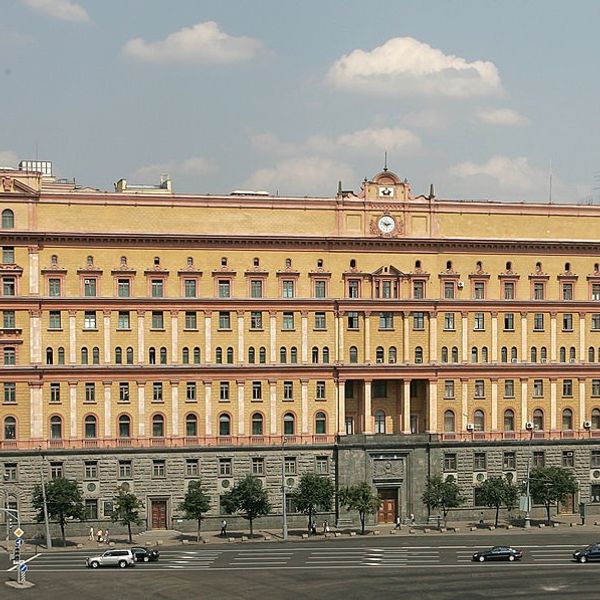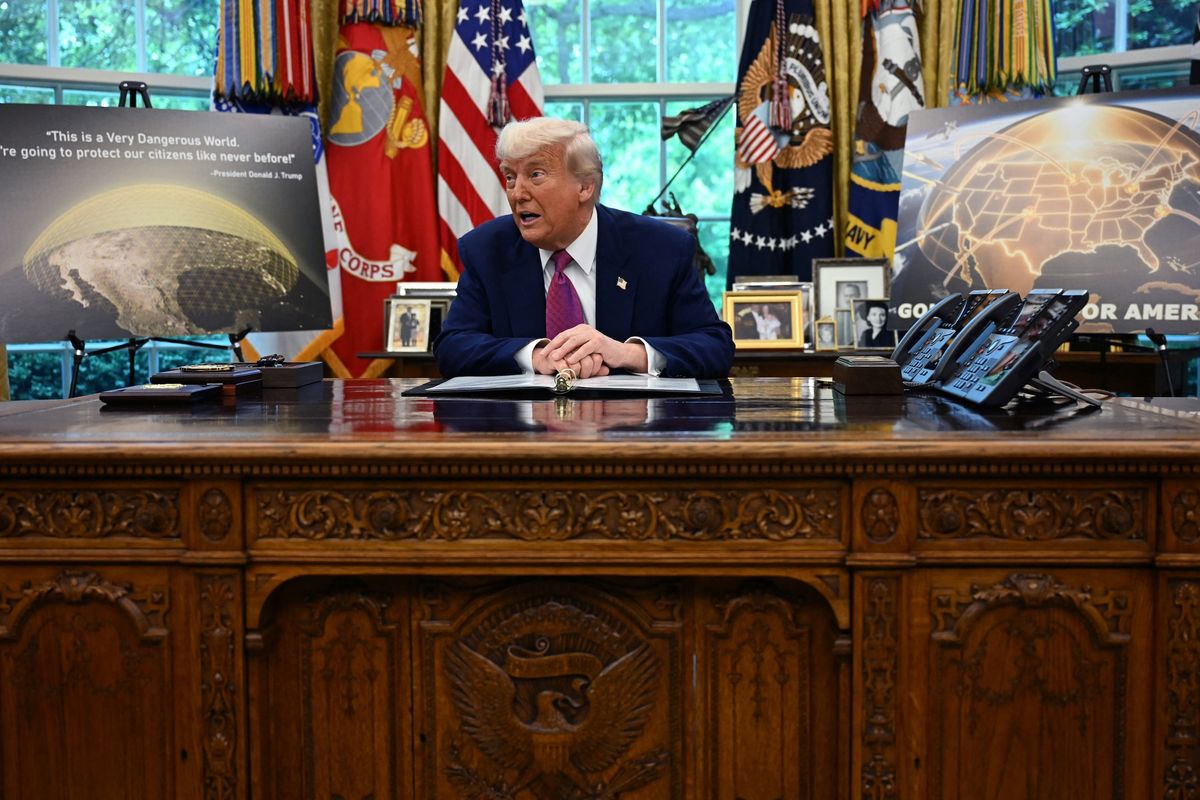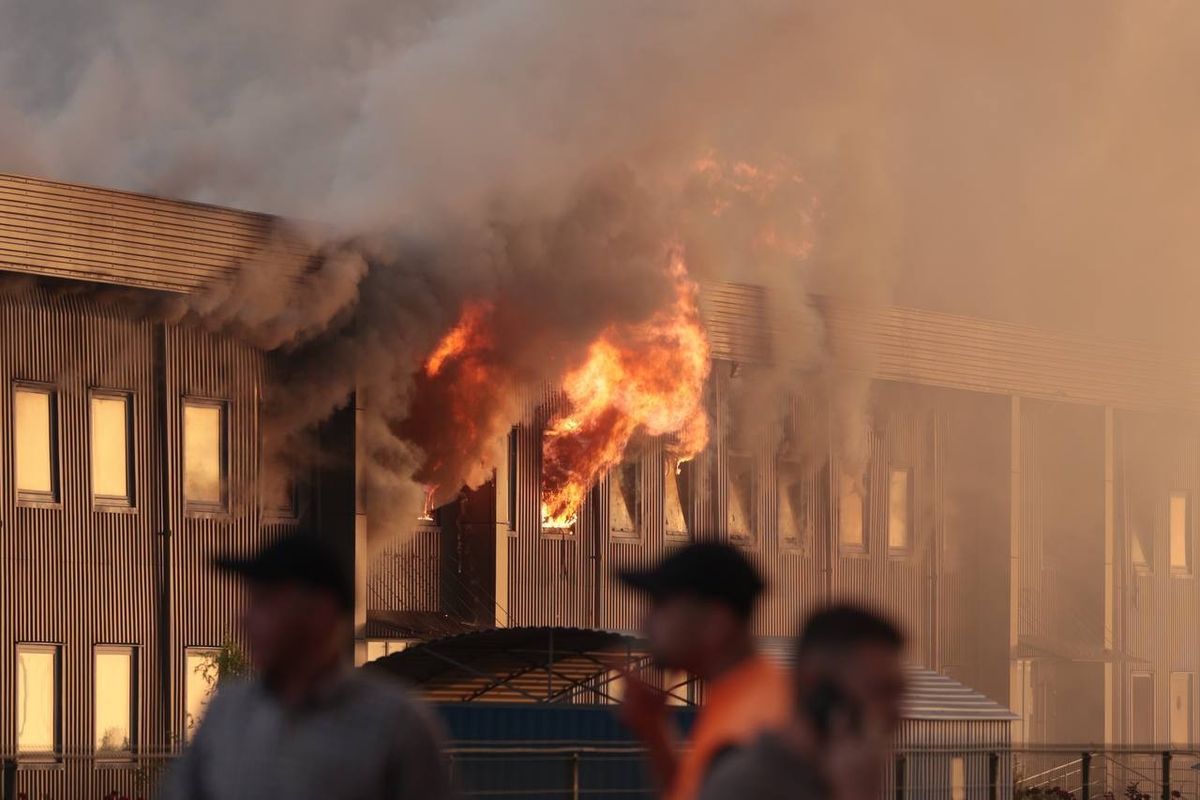OPINION — The Defense Department has gone to war against the coronavirus, employing some 50,000 troops on both offense and defense.
Joint Chiefs Chairman Gen, Mark A. Milley announced during a Pentagon press conference April. 14, “We are, in fact, at war against a virus. We are a supporting organization.”
While the Commander-in-Chief remains in the spotlight every day, little publicity is being paid to some 50,000 Defense Department active, Reserve and National Guard troops who are in the fight.
Take, for example, the creation of the Army Reserve Urban Augmentation Medical Task Forces (UAMTF), whose mission is to provide an “expeditionary, deployable, and scalable medical staff (85 personnel) to urban areas to assist with low acuity, medical care.”
Each UAMTF unit can provide services equal to a 250-bed hospital with 14 physicians among whom is an infectious disease specialist and four respiratory specialists. In addition, each has 16 medics, 13 nurses, five physician assistants, two dentists, four pharmacists, two clinical psychologists, a psychiatrist, two occupational therapy specialists, four dieticians and 18 other supporting staff.
The idea of forming the units was discussed within the Army back in February and March, while the White House was playing down the virus threat to the U.S. homeland. ''We went ahead, and we knew that there was going to be a lot of demand for medical professionals,'' Army Chief of Staff Gen. James C. McConville told the Army News Service on April 10, when the first units were deployed.
A call had gone out to Army Reservists for doctors, nurses and other specialists and some 14,000 responded. By April 5, 'We put together these 15 Urban Augmentation Medical Task Forces, and they are motivated and ready to go,” McConville said.
As of last Thursday, some 2,000 Army Reservists in 14 UAMTFs were deployed in New York, New Jersey, Michigan, Massachusetts, Pennsylvania, and Connecticut, Army Secretary Ryan D. McCarthy told a Pentagon press conference.
In addition, some 30,000 National Guard troops are working in all 50 states helping with testing, distributing food to local communities and medical supplies to civilian hospitals. Guard members are also supporting construction of 150 alternate care facilities which added some 83,000 beds nationwide, put together under Army Corps of Engineers supervision.
The Corps is working on an additional 28 additional facilities with about 15,800 bed spaces, Corps’ Commander Lt. Gen. Lieutenant General Todd T. Semonite said last Friday. That number had gone up by 11 facilities in the previous ten days while the requests from mayors and governors to survey prospective facilities as potential hospital facilities went up by 100, Semonite said.
He recalled Florida Governor Ron DeSantis wanted the Miami Convention Center to be equipped with 450 beds by Monday, April 20, although earlier, the Corps’ analyst said it couldn’t be finished until April 27. “My guys will have it done by the night of the 20th,” Semonite said last Friday.
A Birmingham, Ala. Construction firm handled the $22.5 million Miami construction job which the Corp of Engineers yesterday afternoon turned over to the Florida National Guard. Medical teams from the Florida Guard will treat patients at the site, easing pressure on area hospitals overwhelmed with Covid-19 victims.
Defense Secretary Mark Esper told reporters during an April 14 press conference, “Our challenge is to keep adapting as we see — as we see the states adapt and as they — as they see their medical staff and their bed capacity, and all these things play out. And I'd say — I think as we go city by city we're going to see this — the same dynamic happen…We bring the ability to quickly pick up and move not just people, but we can move equipment and hospitals to do that.”
On the defense-against coronavirus side, Esper pointed out the Defense Logistics Agency (DLA) on behalf of the U.S Department of Health and Human Services (HHS) had signed a $415 million contract with Battelle Memorial Institute of Columbus, Ohio, for 60 Critical Care Decontamination Systems. The system uses concentrated, vapor-phase hydrogen peroxide on N95 masks, allowing each system to decontaminate 80,000 masks a day, and enabling reuse up to 20 times per mask. Two units have already been delivered to New York, and one each to Columbus, Boston, Chicago and Tacoma, and all 60 will be available by the end of May.
The services are also going on offense as part of the active government/non-government hunt for a vaccine.
Back on March 5, Brigadier General Mike Talley, commanding general of U.S. Army Medical Research and Development Command at Fort Detrick told a Pentagon press conference, Walter Reed Army Institute of Research scientists “conducted the first in-human Phase One trials of the MERS vaccine. That's the only MERS countermeasure and only the third coronavirus vaccine ever tested in humans, and we're building upon that science for Covid-19 solutions as we speak right now.”
Dr. Nelson Michael, director of Walter Reed’s Center for Infectious Disease Research, is working with others in the Trump administration’s interagency effort. He has great connections since his first Army rater was Dr. Robert Redfield, current CDC Director; his second rater was Dr. Deborah Birx, now running the Covid-19 response under Vice President Pence; and recently he worked with Dr. Anthony Fauci on HIV vaccines.
With Dr. Fauci's team, Dr. Michael has been working to find a vaccine candidate that was scientifically not duplicative with others. They have ended up with two different vaccine platforms. Their present goal is to get through early studies on mice and monkeys and be in position by winter to begin testing for safety and immune response if there is a second wave of Covid-19.
As Dr. Michael put it, “Potentially if there is a second wave, we've got to be ready — make it all the way through those first studies on the animals, and the safety and the immune response so we're ready in position and ready to go if this comes back and there are a bunch of infections so we can know is it protecting.”
At last Thursday’s press conference, Army Secretary Ryan McCarthy referred to the Walter Reed team investing $75 million to research and test three vaccine prototypes on small animals. The Army is “planning to select one to move forward to initial clinical testing in humans. This candidate is among several being considered by the U.S. government,” he said.
The Defense Department is also into the search for new testing and therapeutic techniques. At an April 10, Pentagon press conference, Assistant Secretary of Defense for Health Affairs Tom McCaffery told reporters, “Our research experts are focusing in on diagnostic testing, utilizing DOD's robust laboratory network to perform testing, and pursuing additional types of diagnostic capabilities, to include serologic testing to assess the patient's blood for the presence of Covid-19 antibodies.”
He also said the department was “collaborating closely with other federal research efforts on the promising antiviral therapeutic remdesivir through Covid-19 clinical trials, having previously funded the development of this antiviral for the treatment of Ebola and Marburg viruses.”
Last week, Gilead Sciences’ antiviral medicine was in the news after a story leaked that a clinical trial in Chicago on Covid-19 patients had shown promise.
Chalk up another assist for the military.
Read more expert-driven national security insights, opinion and analysis in The Cipher Brief













